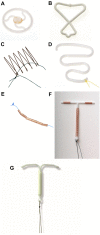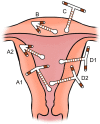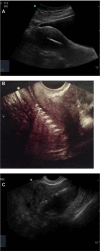Intrauterine devices and risk of uterine perforation: current perspectives
- PMID: 29386934
- PMCID: PMC5683155
- DOI: 10.2147/OAJC.S85546
Intrauterine devices and risk of uterine perforation: current perspectives
Abstract
Uterine perforation is an uncommon complication of intrauterine device insertion, with an incidence of one in 1,000 insertions. Perforation may be complete, with the device totally in the abdominal cavity, or partial, with the device to varying degrees within the uterine wall. Some studies show a positive association between lactation and perforation, but a causal relationship has not been established. Very rarely, a device may perforate into bowel or the urinary tract. Perforated intrauterine devices can generally be removed successfully at laparoscopy.
Keywords: intrauterine device; intrauterine system; uterine perforation.
Conflict of interest statement
Disclosure The authors have received fees for consultancy and provision of training from the manufacturers of intrauterine devices. The authors report no other conflicts of interest in this work.
Figures





References
-
- Richter R. Ein Mittel zur Verhütung der Konzeption [A means of preventing conception] Deutsch Med Wochenschr. 1909;35:1525. German.
-
- Gräfenberg E. Die intrauterine methode der konzeptionverhütung. In: Haire N, editor. Proceedings of the Third World League for Sexual Reform Congress, London 1929. London, UK: Kegan Paul, Trench, Turner and Company; 1929. pp. 166–175.
-
- Sivin IB. State-of-the-art on non-hormonal methods of contraception: III. Intrauterine devices. Eur J Contracept Reprod Health Care. 2010;15:96–112. - PubMed
-
- United Nations Department of Economic and Social Affairs World contraceptive patterns 2013 New York, NY: United Nations Department of Economic and Social Affairs; 2015Available from: http://www.un.org/en/development/desa/population/publications/family/con...Accessed December 16, 2015w
-
- Murphy MC. Migration of a Gräfenberg ring. Lancet. 1933;2:1369–1370.
Publication types
LinkOut - more resources
Full Text Sources
Other Literature Sources

